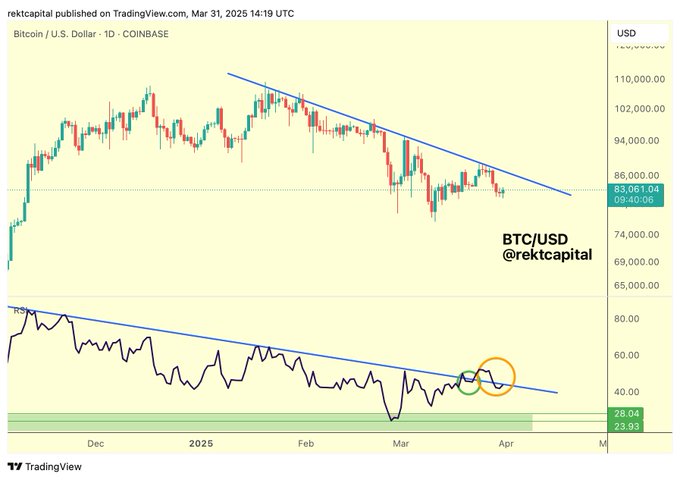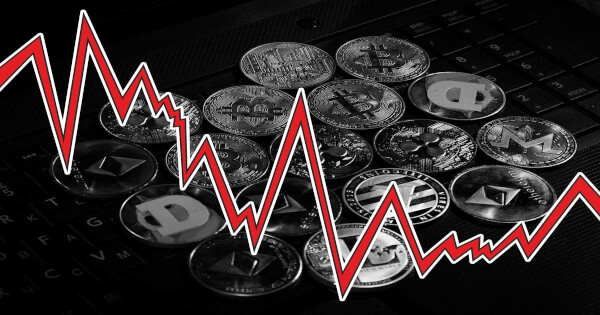
As the US prepares to implement new tariffs, the crypto market is seeing increased volatility. Recent developments involving China, Japan, and South Korea may further contribute to market uncertainty.
The three countries have agreed to respond jointly to the tariffs, raising questions about how global trade tensions will affect the crypto market. With President Trump’s planned “Liberation Day” tariffs on the horizon, questions loom over the future of Bitcoin and other cryptocurrencies.
U.S. Tariffs and Global Trade Tensions
China, Japan, and South Korea have reportedly confirmed that they would cooperate in addressing the U.S. tariffs, which are set to be introduced in early April. The tariffs target multiple industries, including the automotive and pharmaceutical sectors. This move comes on the back of US threats to impose additional tariffs which President Donald Trump has termed as ‘Liberation Day,’ set to happen on April 2, Wednesday.
Moreover, these three nations America’s important trading partners, and these tariffs can affect the stability of their economic sectors. Such cooperation indicates that they have formed strategic alliances in order to safeguard their export destinations and economic advantages.
The announcement comes in the wake of the trade ministers of the three countries meeting in a bid to intensify cooperation hence reducing the effects of the policies of the United States of America. However, tensions on the trade issue may even escalate further, and the odds of a trade war are still looming over the crypto market . These developments have led to alerts over various global financial markets, especially due to increasing integration of the national and global stages for business, especially in the crypto market.
Bitcoin Price Analysis Amid Tariff Concerns
The crypto market has already shown signs of distress, with Bitcoin experiencing a noticeable decline. As of March 31, Bitcoin was trading at $82,687, down nearly 2% in a 24-hour period. The cryptocurrency has faced a series of lower lows, with the most recent drop continuing a bearish trend. Bitcoin’s price has struggled to maintain its momentum, and the market has responded cautiously to global economic news.
Overall, the activities in the US market play a key role for the Bitcoin price decrease. The US being close to ‘Liberation Day’ on April 2 when new tariffs are anticipated to be implemented, traders are preparing themselves for increased fluctuation in the crypto market. These aspects, including the future of global trade and uncertainty around what the US policies would be like for the world economy, has given investors more reason to pause. Bitcoin, in particular, has been caught in this downward spiral, with its price showing weaker momentum.
Bitcoin’s recent price movement reflects a broader risk-off sentiment, with traders reducing exposure to more volatile assets. While Bitcoin was able to recover slightly after four consecutive days of decline, the overall sentiment remains bearish. Bitcoin has not managed to break past key resistance levels, and the possibility of further downward pressure remains high.
Institutional Interest and Long-Term Outlook
Despite the short-term declines in Bitcoin’s price, institutional interest in the cryptocurrency remains strong. On-chain data analyzed by Glassnode reveals that the number of addresses containing from 1000 to 10000 BTC has also been slowly rising, indicating that institutional investors are still active in the market.
This acquisition by institutional investors shows that investors are increasing their holdings of Bitcoin in the long-term despite short-term downturns. At the same time, the Fear & Greed Index is still in the “fear” territory, which means that traders are concern about long-term impact of the tariffs.
Bitcoin Fear and Greed Index is 34. Fear
Current price: $82,687 pic.twitter.com/wDyPuGshJG
— Bitcoin Fear and Greed Index (@BitcoinFear) March 31, 2025
Similarly, XRP and Cardano (ADA) alongside Solana (SOL), Dogecoin (DOGE), and Ethereum (ETH) have been on the decline due to the general bearish crypto market.
Additionally, Bitcoin exchange-traded funds (ETFs) have shown sustained inflows, highlighting that there is still demand for Bitcoin from institutional traders. This ongoing interest from large investors contrasts with the risk-off sentiment observed in the broader market. However, analysts remain cautious, as the tariffs and economic uncertainty could keep Bitcoin’s price rangebound in the short term.
Bitcoin’s Price Resistance Should Crypto Market Decline Persist
Bitcoin price has reached important support and resistance zones, and analysts like Rekt Capital are also considering these levels crucial. For the moment, Bitcoin is hovering slightly above the $82000 level. The immediate target on the upside is found at $85,000 which has offered a major resistance to Bitcoin in the past few days. If the Bitcoin price can get through this level and establish an upward movement, then there could be some kind of a bounce back.
However, if the tariffs result in further economic instability, Bitcoin may struggle to maintain its price levels. Some analysts suggest that Bitcoin could experience a V-shaped recovery if the market stabilizes.
On the other hand, if the bearish trend continues, Bitcoin price could see further declines, potentially testing lower support levels around $70,000 or even below, depending on the market’s reaction to the tariffs and global trade tensions.
The post Will Crypto Market Decline Persist As China, Japan, South Korea Respond To US Tariffs? appeared first on CoinGape.

 1 day ago
39
1 day ago
39









 English (US) ·
English (US) ·